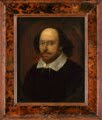Flaming June
Imogen slept sprawled on the benches that ran along the West portico. Flowers and fig trees offered only minimal relief from the sun. Her mother hovered at the curtain in anxious adoration, not wishing to wake her sleeping daughter. It had been a busy morning and the evening would be even more demanding of her time and energy. A rest before the festivities was certainly in order.
The humidity was heavy in the air making her chemise cling to the silhouette of her blossoming figure. She was a woman now and soon to be a married woman. The match was made long ago and neither bride nor groom had offered any resistance to it. A June wedding was not ideal with its unforgiving heat but neither family wished to delay. Tears sliding down the mother’s cheek, she dreaded the days, weeks, months ahead without a daughter's company, warm laughter and incessant questions.
The sun was lower now and the orange silk chemise played off the reflection from the water creating a red glow at the crown of her head. That head would soon be adorned with fresh flowers and ribbons held up by intricately woven braids and the chemise swapped for a stunning embroidered gown. Her cheeks were flushed and the mother wondered what her daughter dreamt of. Were they the innocent dreams of a child or the anticipation of a nymph well aware of what lay ahead in the days and nights to follow?
A dragonfly buzzed by loudly, briefly landing on her shoulder. Eyes still closed, she reached to shoo it away. It was too late, the vibration from its’ fluttering wings disturbed the magic in her dream and startled the mother from her tearful reverie. She blew a farewell kiss to her stretching daughter, maids surrounding her, and headed toward the gallery to see about the banquet.
Imogen opened her eyes slowly, recoiling slightly at the touch of her maid Claire. She was still struggling to wake and hesitant to proceed with the task at hand. She leaned back as Claire tried to slip the chemise from her shoulder. She glared at the maids offering them a stern warning that she wasn't ready. In the heat of the afternoon, they did a slow dance of push and pull; eventually getting Imogen upright. Claire made eye contact with the younger maid, Amelie, signalling for her to go inside.
Alone with Imogen now, she stepped in front of her just inches from her face, her hands placed firmly on the young bride’s hips, “Mademoiselle, we must get you ready now”. She lifted her chin up and Imogen looked up into Claire's familiar face, meeting her gaze. “You will be fine. This will be good, cherie”. She took each hand and kissed the backs of them in both a gesture pleading for compliance and of reassurance. Then she gently but firmly grasped her hand and pulled her into the nearby room that had been prepared for her bathing and dressing. Imogen's mother had just left the fresh flowers she'd picked in her garden to scent the water and be woven into her hair.
Amelie had prepared the cool bath scented with Lavender, Jasmine and Gardenia flowers. She looked up as Claire entered the room with Imogen being pulled like a rag doll behind her. The girl was afraid, Amelie could tell, but knew little of these things as she herself had not been matched. Claire guided her to the bath and slipped the chemise from her shoulders. The loose, silky fabric fluttered silently to the floor. As she gathered it up she lifted each of Imogen's legs up as if the task to difficult for her.
She gasped as she stepped in, scrunching up her face as she lowered herself into the bath. The water was fresh from the well and unwarmed offering a reprieve from the heat and a rousing affect, the latter of which was not appreciated. Amelie began with her hair adding soap and oil to cleanse and perfume it for the pleasure of her husband. She worked with a large comb to remove any tangles, silently planning how she'd style it later. Claire began the more intimate task of scrubbing her body with a softened sea sponge, also applying soap and scented oils.
Imogen acquiesced to the bath, yet another last before the many firsts to come. A girl's last nap, last bath, is to be remembered after she becomes a woman and her body is no longer her own. Brows furrowed and crossing her hands across her breasts, she wondered would Jean-Luc be gentle with her. He was intense and even brooding at times. Often seeming impatient, she worried he would not take time with her, that he might hurt her. Her shoulders tensed and sensing her stress Amelie massaged her shoulders gently. She hummed a song she'd heard in the square and when Imogen's shoulders relaxed she began to sing the words quietly and close to her ear hoping it would soothe her. It was a song of young love and Amelie sang to inspire Imogen that she might one day grow to love him.






















